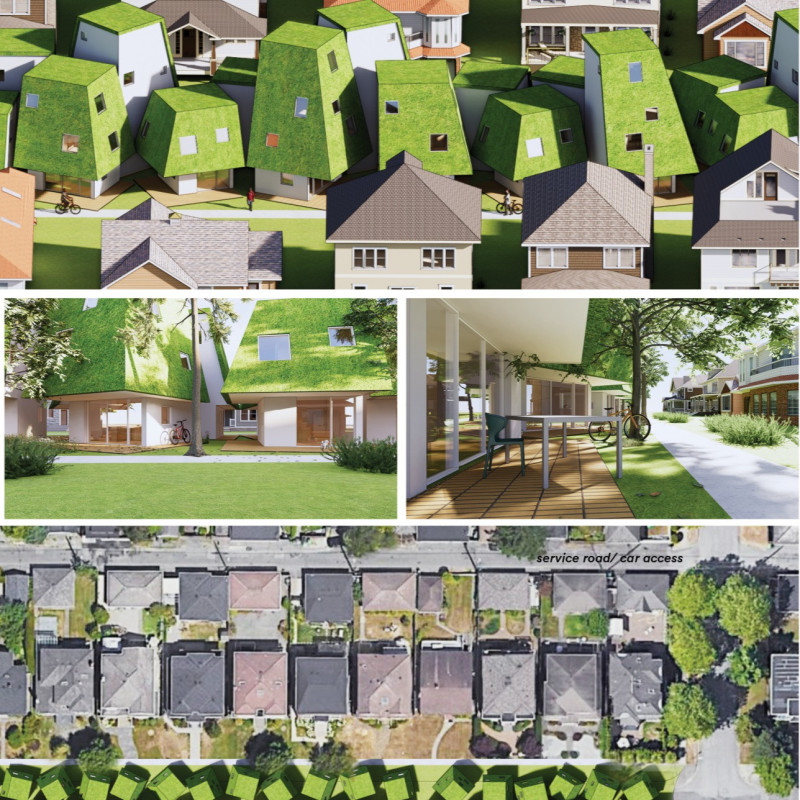5 key facts about this project
The primary function of the "Parallel Houses" is to provide high-quality, adaptable living environments that promote both individual comfort and communal engagement. Each home is designed with a clear understanding of the interplay between private and public spaces, allowing residents to enjoy their personal sanctuaries while remaining part of a larger, vibrant neighborhood.
The architectural layout features single-story homes thoughtfully organized in a manner that nurtures connections between the units while preserving the privacy of each household. The design includes an upper tier that houses essential living areas, such as kitchens and bedrooms, allowing for ample light and views of the surroundings. Conversely, the lower tier focuses on versatility, accommodating office spaces and communal living areas that respond to the evolving nature of work and family life.
Materiality plays a significant role in the architectural expression of the "Parallel Houses." The use of warm wood cladding not only adds aesthetic warmth to the facades but also enhances the sustainability aspect of the project. Metal roofing materials are selected for their durability and efficiency, ensuring a long-lasting structure that harmonizes with the natural landscape. Large glass windows and doors invite natural light into the interiors and blur the boundary between indoor and outdoor spaces, showcasing a continuous dialogue with the environment. Concrete elements serve as a reliable foundation while also forming the basis for communal outdoor spaces designed for social activities.
One of the distinctive features of the "Parallel Houses" is the incorporation of green roofs, which demonstrates a commitment to ecological sustainability. This design approach enhances the homes' energy efficiency and positively impacts the local environment by promoting biodiversity. The project is carefully positioned within the natural landscape, utilizing existing trees and plant life to reinforce the connection between the architecture and its surroundings.
The modularity of the design is particularly noteworthy, allowing for customization as per varying family sizes and lifestyles. This flexibility is essential in contemporary urban settings, where housing demand is diverse and constantly evolving. Additionally, communal interaction areas are integrated into the project, fostering opportunities for residents to gather, share experiences, and strengthen neighborhood ties.
Both the architectural plans and sections illustrate the careful consideration that has gone into the design process, revealing the intention behind every element introduced into the homes. The spatial organization, material choices, and innovative approaches to communal living all contribute to the originality of the project.
As you explore the presentation of the "Parallel Houses," delve into the architectural designs and ideas that encapsulate this thoughtful exploration of urban living. Reviewing the architectural plans and sections will further clarify how these homes achieve an effective balance between private space and community engagement, making it a significant model for future residential developments.























